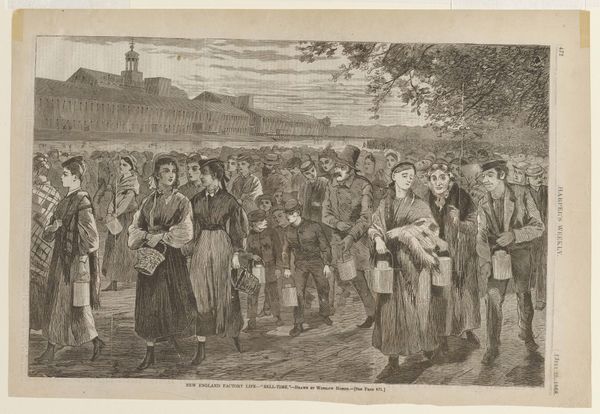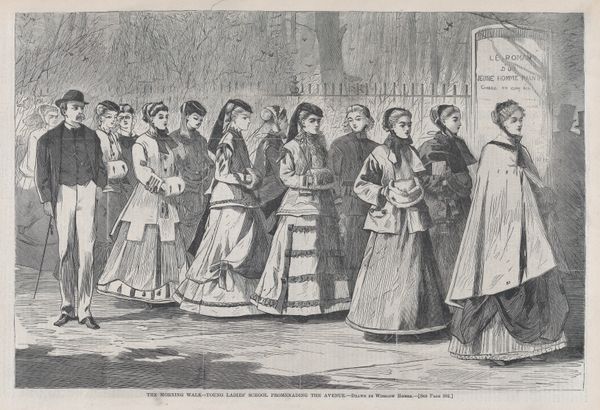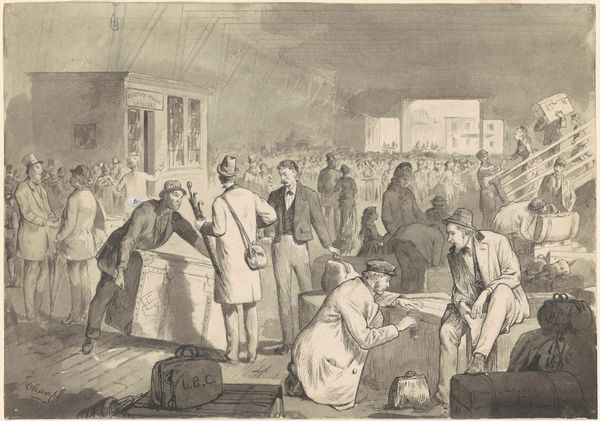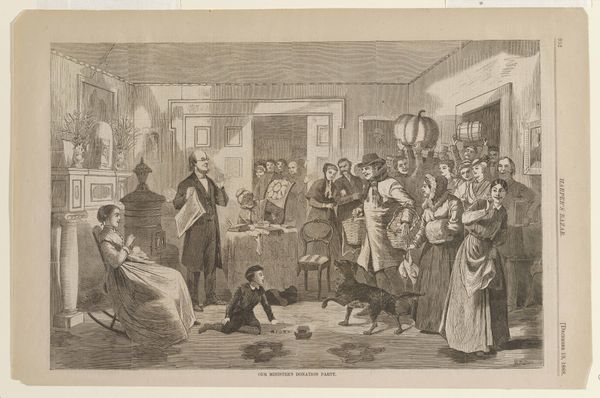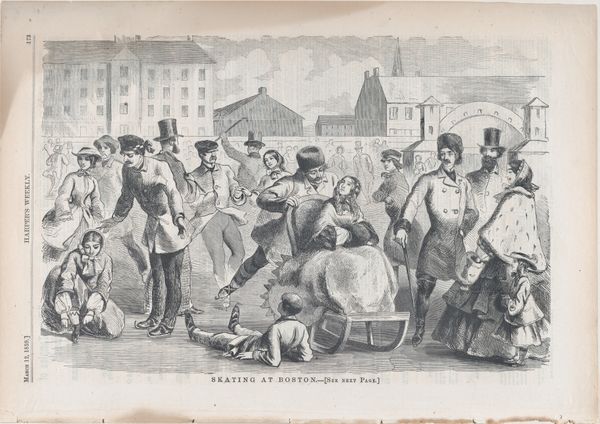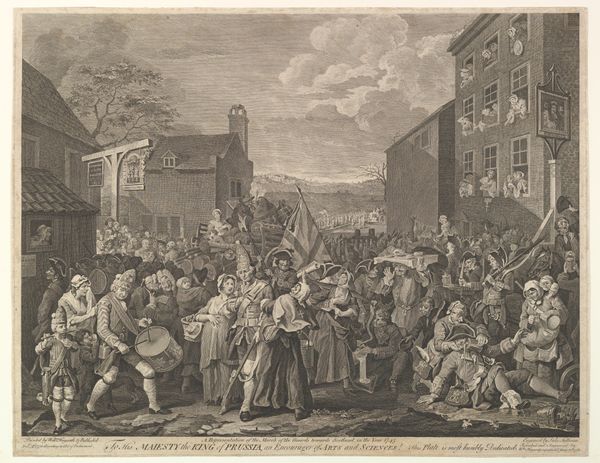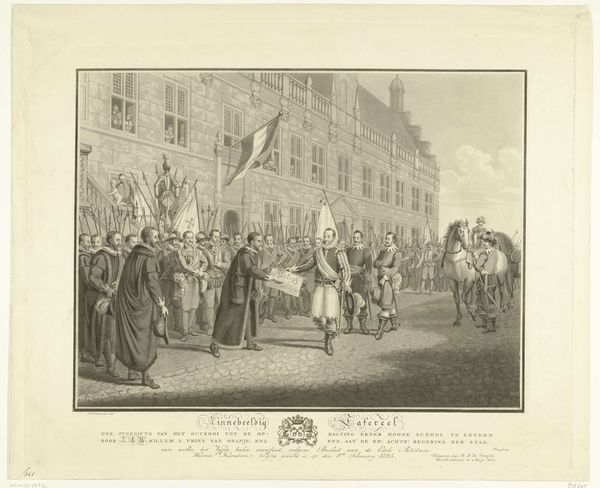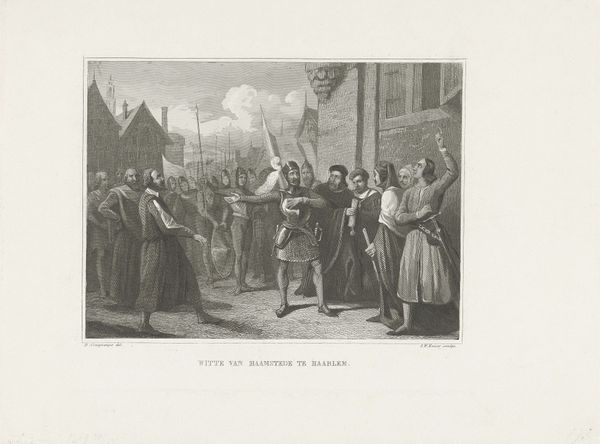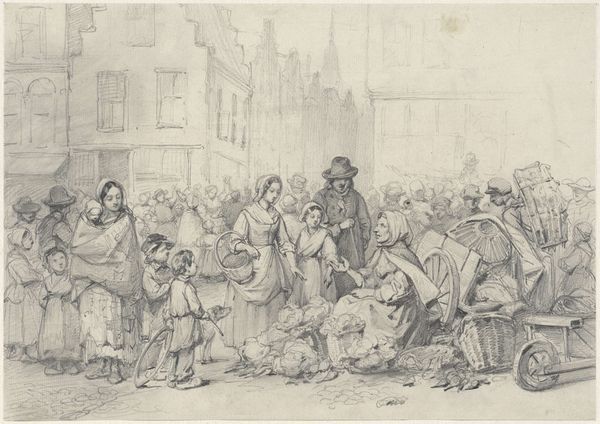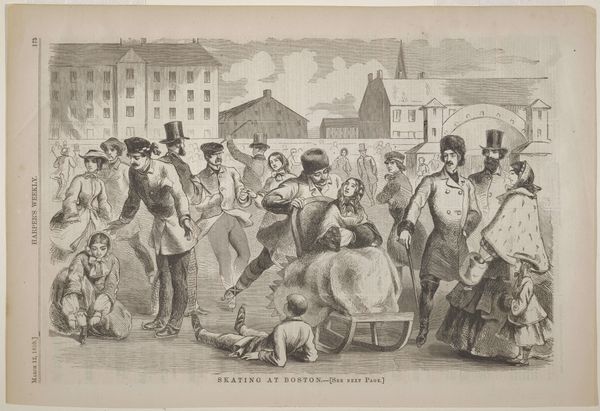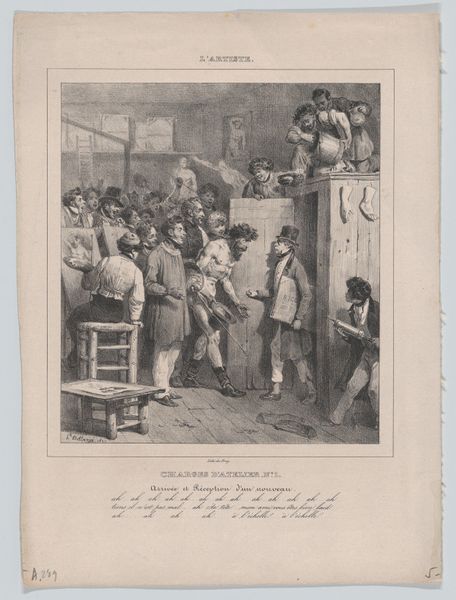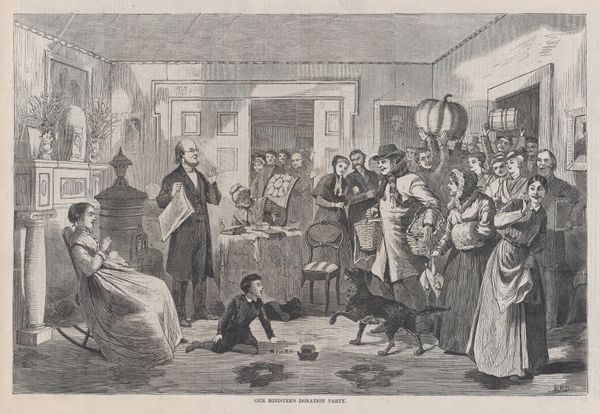
New England Factory Life – "Bell Time" (from "Harper's Weekly," Vol. XII) 1868
0:00
0:00
drawing, print
#
drawing
# print
#
impressionism
#
landscape
#
men
#
genre-painting
Dimensions: image: 8 3/4 x 12 7/8 in. (22.2 x 32.7 cm) sheet: 10 11/16 x 15 7/8 in. (27.1 x 40.3 cm)
Copyright: Public Domain
Editor: So this is Winslow Homer's "New England Factory Life – 'Bell Time,'" a print from 1868, originally published in Harper's Weekly. It feels very crowded and somber. What jumps out to you? Curator: I see a powerful commentary on industrialization and its impact on American society, particularly the lives of working-class individuals in post-Civil War New England. What details stand out as you consider that concept? Editor: I notice the large factory building looming in the background and that everyone seems to carry either lunch pails or baskets, yet some have this look of total resignation, while others seem a bit more optimistic or hardened. The mix is confusing. Curator: The composition tells a story of social and economic forces. The artist captured the institutional conditions for the labor class: How might the publishing in a widely circulated periodical like Harper's Weekly shaped public perception of labor at the time? Editor: Maybe it was to foster sympathy? Or maybe just to document life in these new industrial centers? Did the publishers have any motivations or biases at that time? Curator: Undoubtedly, "Harper's Weekly" catered to a largely middle-class audience and certainly held a political position. The very act of depicting these factory workers, however realistically, had the potential to challenge existing power dynamics, making visible those often unseen. Editor: So the image itself participates in a sort of political act, shaping how people view industry. I never really thought of illustrations having such an impact at the time! Curator: Precisely. Winslow Homer presents us not just with an image, but with a critical document that continues to prompt dialogue on labor, class, and the evolving American landscape. Editor: It is interesting to view art through the lens of these socio-economic forces, and really highlights the context of artwork creation. Curator: It's crucial to understanding how art is inextricably linked to broader societal structures and discourse. Now, how would your understanding alter had Homer celebrated factory conditions?
Comments
No comments
Be the first to comment and join the conversation on the ultimate creative platform.
